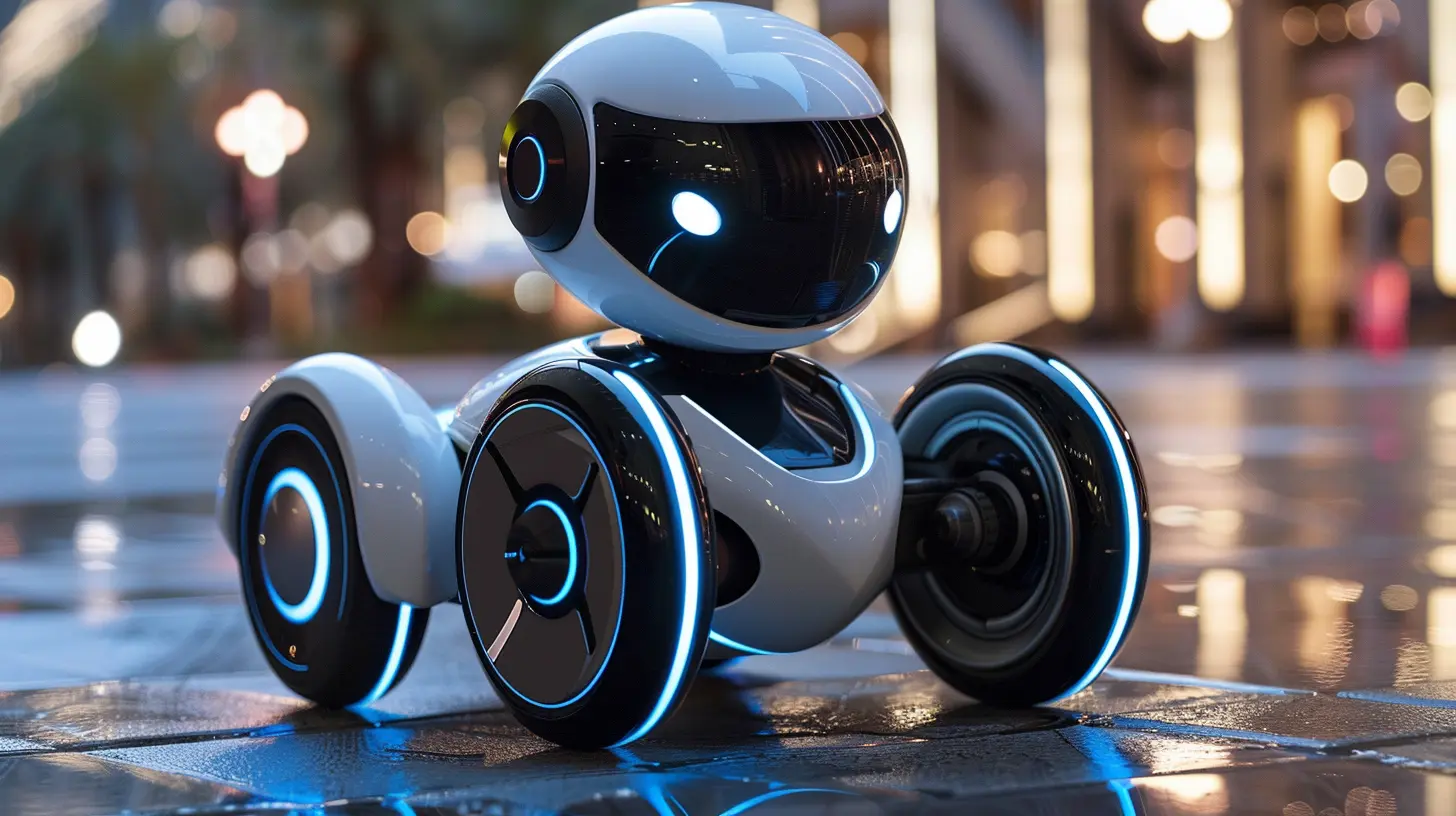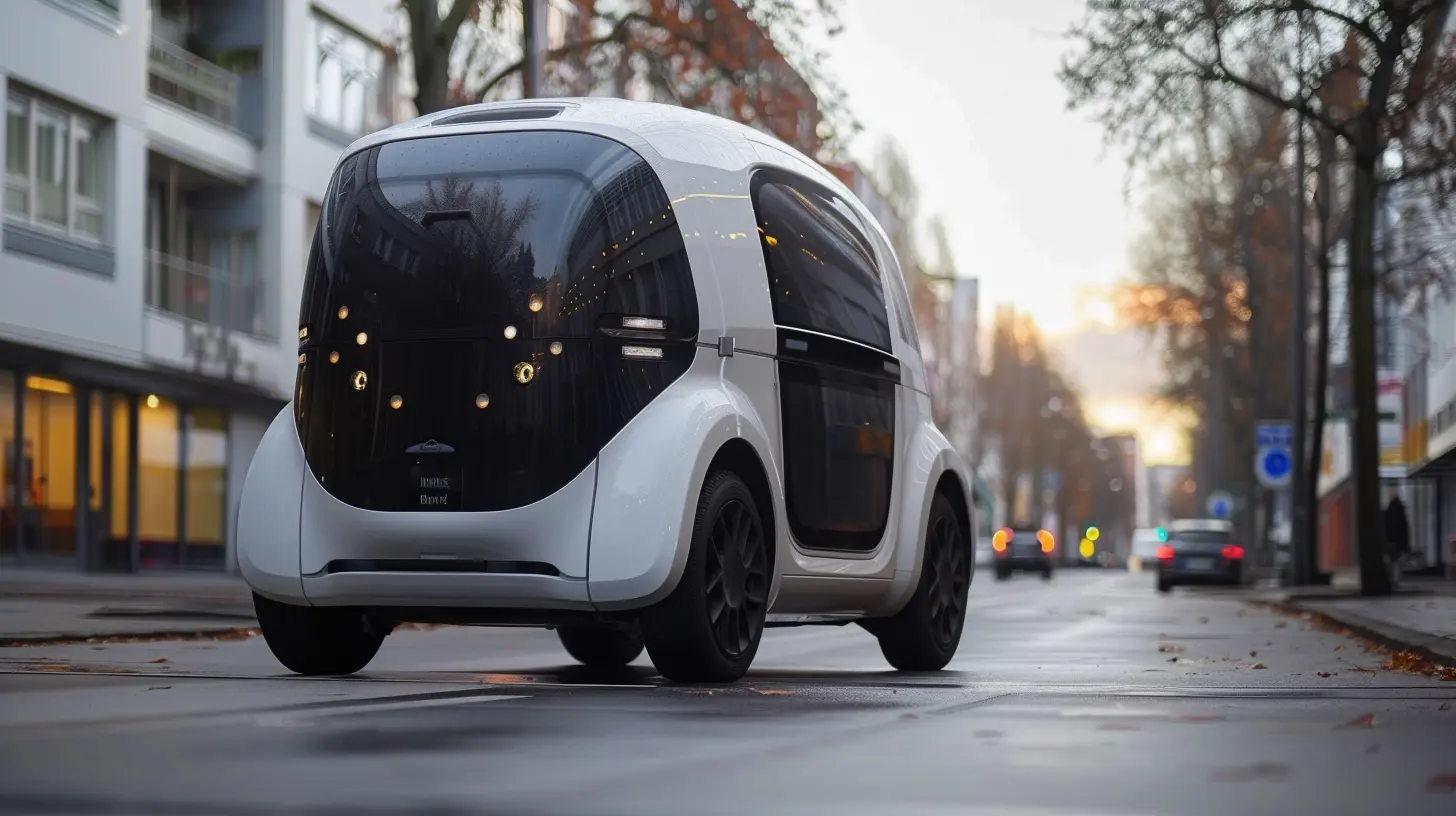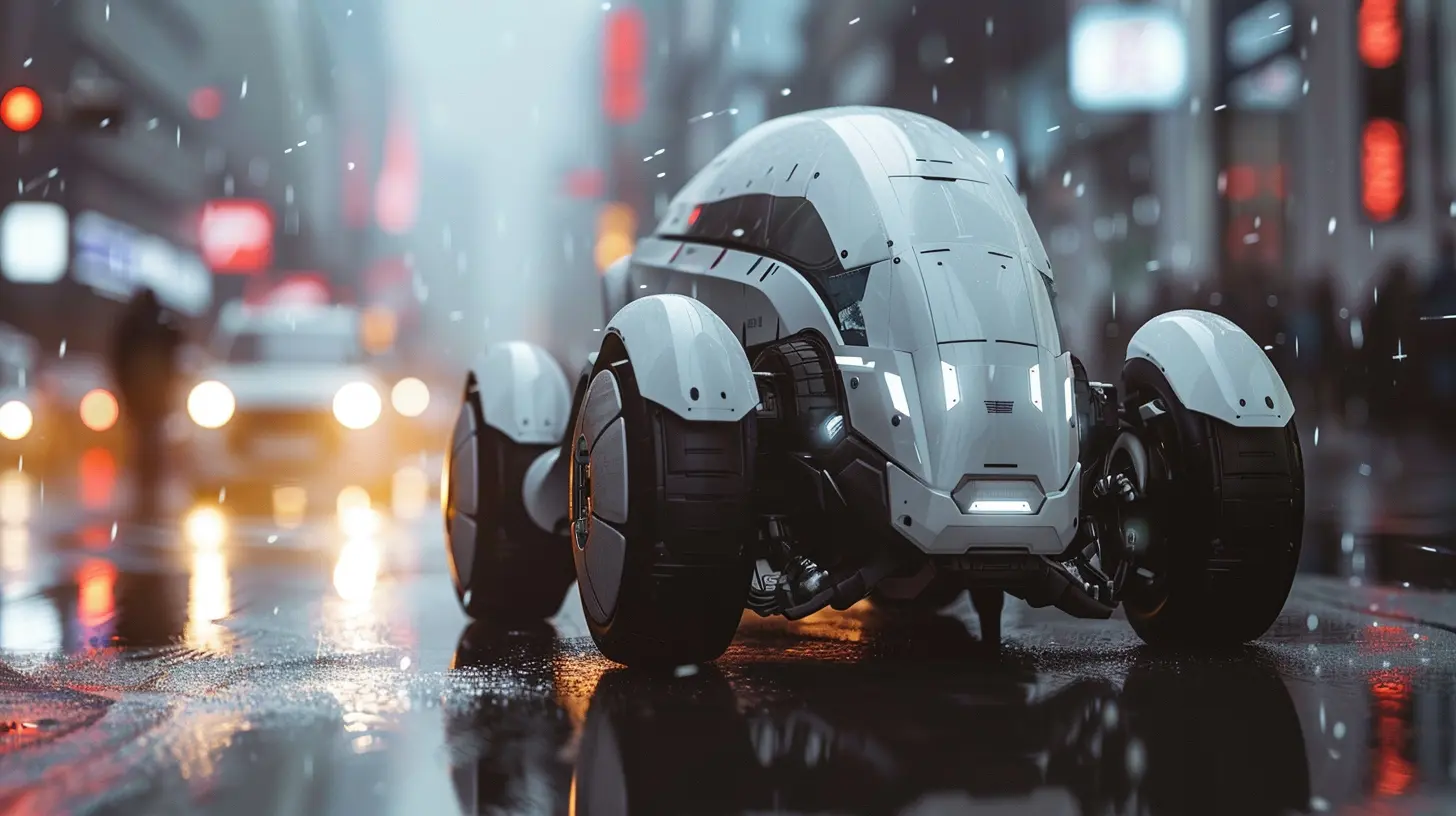The Role of Robotics in Autonomous Vehicles
15 November 2025
Picture this: a car that drives itself, navigates through traffic, follows road rules, and even avoids accidents, all while you sit back, relax, and maybe catch up on your favorite podcast. Sounds like something straight out of a sci-fi movie, right? Well, welcome to the future. And at the heart of this revolution, making these self-driving dreams a reality, is robotics.
The role of robotics in autonomous vehicles is like the brain to a human body. Without it, the entire system would just be a lifeless shell. But how exactly does robotics play into this? Why is it so crucial? And what does it mean for the future of transportation? Let’s dive into the details.

What Exactly Are Autonomous Vehicles?
Before we get into the meat of robotics, it's good to first understand what we mean by "autonomous vehicles." Simply put, these are vehicles that can navigate and operate without human intervention. They rely on a combination of sensors, cameras, artificial intelligence (AI), and yes, robotics to make decisions in real-time.Think of it as a sophisticated version of cruise control, but instead of just maintaining speed, the car can make complex decisions like stopping at a red light, avoiding pedestrians, and merging onto a highway. Pretty impressive, right?

The Backbone of Autonomous Vehicles: Robotics
Now, you might be wondering: where does robotics fit into all of this? Well, robotics is the technology that allows the vehicle to physically interact with its environment. It involves machines that can sense, process data, and act based on that information. In the case of autonomous vehicles, robotics handles everything from steering to braking and even adjusting the mirrors—yes, even the mirrors!At its core, robotics in autonomous vehicles encompasses a wide range of systems, each playing a role in making the car "intelligent." Let’s break down some of the essential components.
1. Robotic Sensors and Perception Systems
Imagine trying to drive blindfolded. Scary, right? The same goes for autonomous vehicles. They need to "see" their environment, and this is where robotic sensors come into play. These sensors act like the vehicle’s eyes, ears, and even skin.- LIDAR (Light Detection and Ranging): This is one of the most critical sensors in autonomous vehicles. LIDAR uses lasers to create a 3D map of the surroundings, helping the car detect objects, measure distances, and identify obstacles. Think of it as the car’s radar vision.
- Cameras: Much like human eyes, cameras capture visual data, allowing the vehicle to detect signs, lane markings, pedestrians, and other cars. But while our eyes are limited to what we can see in front of us, these cameras offer a 360-degree view.
- Radar and Ultrasonic Sensors: These sensors detect objects and measure their speed, helping the vehicle maintain safe distances from other cars, even during high-speed chases... just kidding, no chases here! But they do help with adaptive cruise control and parking assistance.
2. Robotic Actuation Systems
Once the sensors have gathered all the data, the car needs to act on it. This is where robotic actuation systems come in. These systems control the vehicle’s movements—steering, accelerating, braking, and even turning those windshield wipers on when it starts to rain.- Electronic Steering: Traditional cars use mechanical systems for steering, but in autonomous vehicles, steering is controlled electronically. Robotics enables the car to make smooth turns, adjust its direction based on road conditions, and even execute complicated maneuvers like parallel parking.
- Braking Systems: Forget about slamming on the brakes. In autonomous cars, braking is predictive and precise. Robotics ensures that the car can stop or slow down in response to sudden obstacles or changes in traffic speed.
3. Artificial Intelligence and Decision-Making
Here’s where things get really interesting. While sensors and actuators handle the physical aspects of driving, AI, combined with robotics, handles the "thinking" part. This is where the vehicle analyzes data and makes decisions—whether to stop, go, or swerve out of the way.AI-driven robotics allows the car to understand complex situations. For example, if there’s a child running onto the street, the car can predict the child’s movement and take action faster than a human could. It’s like having a super-intelligent co-pilot that never gets tired or distracted.
4. Robotic Communication Systems
Autonomous vehicles don’t operate in isolation. They need to "talk" to other vehicles, road infrastructure, and even pedestrians. This is known as Vehicle-to-Everything (V2X) communication, and robotics plays a crucial role in enabling this interaction.- Vehicle-to-Vehicle (V2V): Imagine a world where cars communicate with each other. They share information about road conditions, traffic, and even potential hazards. Robotics facilitates this exchange, allowing vehicles to make coordinated decisions, like adjusting speed to avoid collisions.
- Vehicle-to-Infrastructure (V2I): Similarly, vehicles can communicate with traffic lights, road signs, and other infrastructure. This allows for smoother navigation through cities and fewer traffic jams. Robotics helps process this information in real-time, ensuring the vehicle is always in sync with its surroundings.

Robotics and Levels of Autonomy
Not all autonomous vehicles are created equal. In fact, there are five levels of autonomy, ranging from Level 0 (no automation) to Level 5 (full automation). The role of robotics becomes more significant as we move up the levels.- Level 0 (No Automation): This is your regular car. The driver does all the work—no robotics involved.
- Level 1 (Driver Assistance): Here, robotics starts to make an appearance with features like adaptive cruise control or lane-keeping assist. The driver still needs to be fully engaged, but robotics helps with specific tasks.
- Level 2 (Partial Automation): The car can handle some driving tasks, like steering and braking, but the driver needs to monitor the road and be ready to take over. Robotics is more advanced here, but it’s still a cooperative effort between human and machine.
- Level 3 (Conditional Automation): This is where things get interesting. The car can drive itself under specific conditions, like on highways. Robotics systems handle most of the work, but the driver needs to be able to intervene if something goes wrong.
- Level 4 (High Automation): At this level, the car can drive itself without any human intervention in most situations. Robotics takes full control, but there may still be some limitations, like bad weather or uncharted roads.
- Level 5 (Full Automation): This is the holy grail of autonomous driving. The car can drive anywhere, anytime, under any conditions, with zero human input. Robotics is the sole driver, and you can sit back and relax.

Challenges Facing Robotics in Autonomous Vehicles
While the future of robotics in autonomous vehicles is exciting, it’s not all smooth sailing. There are still several challenges that need to be addressed before we can fully hand over the keys to robots.1. Complex Environments
City streets are chaotic. You’ve got pedestrians, cyclists, animals, potholes, and unpredictable drivers. While robotics systems are incredibly advanced, navigating these complex environments is still a challenge. The car needs to make split-second decisions, and robotics systems must process massive amounts of data in real-time.2. Weather Conditions
Rain, snow, fog—these are all tricky conditions for autonomous vehicles. LIDAR, cameras, and other sensors can be affected by weather, making it harder for the car to "see" its surroundings. Robotics systems need to be robust enough to handle these challenges without compromising safety.3. Ethical Decisions
What happens when an autonomous vehicle faces a moral dilemma? For example, if the car has to choose between hitting a pedestrian or swerving into oncoming traffic, how does it make that decision? This is one of the trickiest challenges, and while AI and robotics are powerful, they’re not yet capable of making ethical decisions like a human would.4. Cybersecurity
With all this technology comes the risk of hacking. Autonomous vehicles rely on a network of sensors, AI, and robotics systems, making them vulnerable to cyberattacks. Ensuring that these systems are secure is a top priority for manufacturers.The Future of Robotics in Autonomous Vehicles
So, what does the future hold? Well, if we fast forward a few decades, autonomous vehicles could become the norm. Robotics will continue to evolve, making cars smarter, safer, and more efficient. Imagine a world with fewer accidents, less traffic, and more free time. Sounds amazing, right?We might even see autonomous flying cars (because why not?), and robotics will play a crucial role in making that happen. But for now, the focus is on improving the systems we have, addressing the challenges, and slowly but surely building a world where self-driving cars are as common as smartphones.
Conclusion
Robotics is the backbone of autonomous vehicles, turning what was once a distant dream into a fast-approaching reality. From sensors and actuators to AI decision-making and communication systems, robotics makes it all possible. While there are still challenges to overcome, one thing is clear: the future of transportation is autonomous, and robotics is driving us there.So, the next time you find yourself stuck in traffic, just remember that a future where cars drive themselves is just around the corner—and it’s thanks to the incredible advancements in robotics.
all images in this post were generated using AI tools
Category:
RoboticsAuthor:

Pierre McCord

